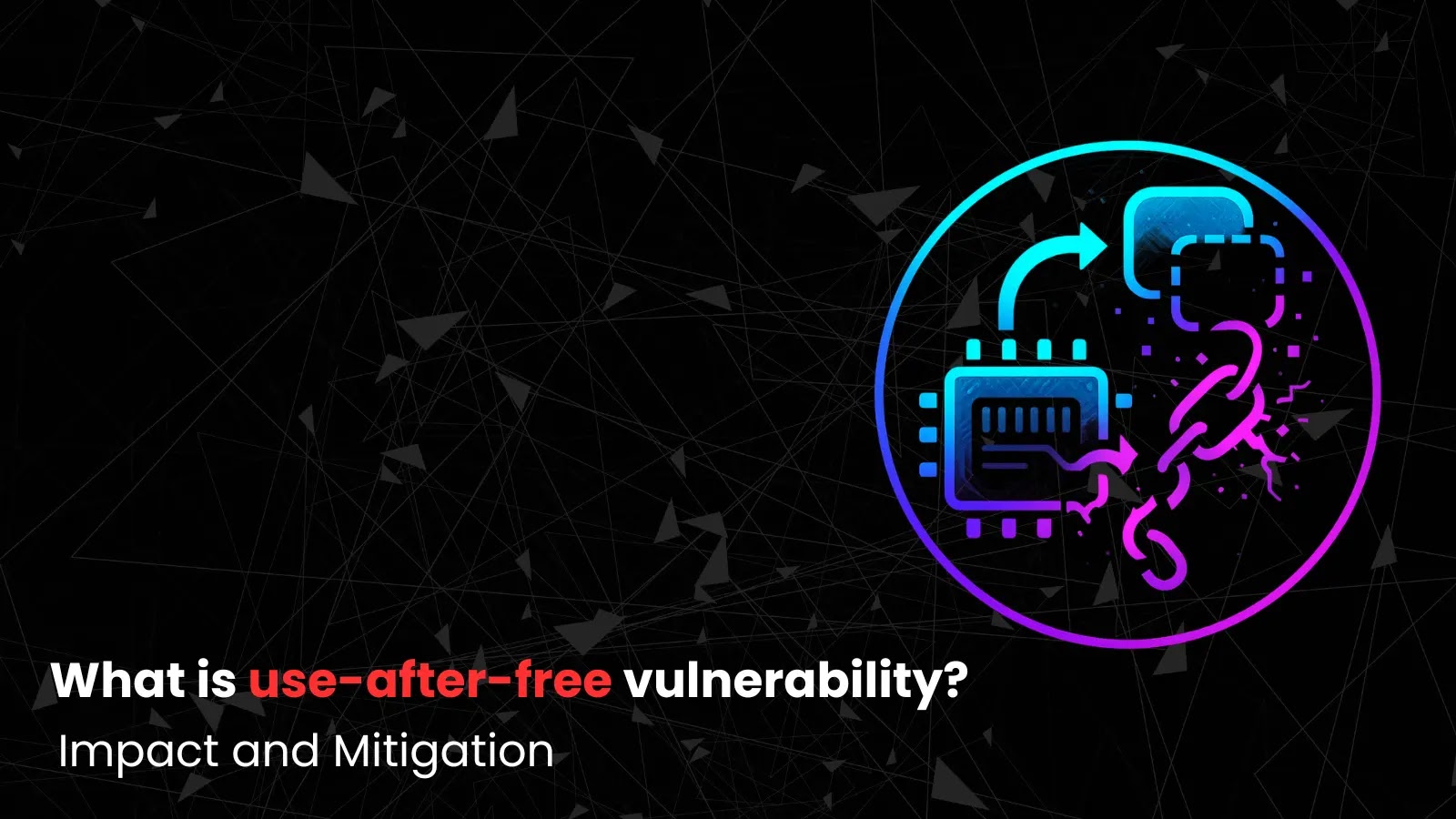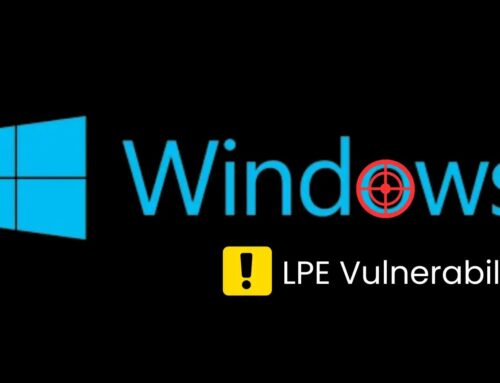
What is Use-After-Free Vulnerability? – Impact and Mitigation
In the intricate landscape of software security, few vulnerabilities pose as persistent and critical a threat as Use-After-Free (UAF). These insidious flaws, deeply rooted in how programs manage memory, can turn seemingly innocuous programming errors into potent weapons for attackers. For cybersecurity professionals, developers, and IT leaders alike, understanding UAF vulnerabilities is not just important; it’s essential for building resilient and secure systems against sophisticated cyber threats.
What is a Use-After-Free (UAF) Vulnerability?
A Use-After-Free (UAF) vulnerability occurs when a program attempts to use memory it has already deallocated or “freed.” Imagine a filing cabinet where a document is removed and the drawer is labelled “empty.” A UAF vulnerability is akin to someone then trying to retrieve information from that “empty” drawer, not knowing it’s either truly empty, or worse, has been refilled with different, potentially malicious, content. This problem is particularly prevalent in languages like C and C++ that require manual memory management.
The lifecycle of a UAF vulnerability typically involves three stages:
- Allocation: Memory is requested and assigned for a specific purpose (e.g., storing data for an object).
- Freeing: The program explicitly releases this allocated memory, marking it as available for reuse.
- Use-After-Free: The program attempts to interact with this memory location after it has been freed. If the operating system or memory allocator has already repurposed this memory for another object, the original program’s interaction can lead to unintended behavior, crashes, or, more dangerously, arbitrary code execution.
The Perilous Impact of UAF Anomalies
The consequences of a successful UAF exploitation can be severe, ranging from application instability to complete system compromise. When an attacker can trigger a UAF condition, they gain a powerful foothold to manipulate program execution. The primary impacts include:
- Arbitrary Code Execution: This is the most critical outcome. By carefully orchestrating memory allocations and deallocations, an attacker can influence what data resides in the freed-then-reused memory. This allows them to inject malicious code or overwrite critical pointers, redirecting the program’s execution flow to their shellcode.
- Denial of Service (DoS): Even without gaining full control, UAF vulnerabilities often lead to application crashes. This can disrupt services, making them unavailable to legitimate users.
- Information Leakage: In some scenarios, using freed memory might expose sensitive data that was previously stored at that location, even if it has been conceptually “freed.”
- Privilege Escalation: If a UAF vulnerability exists in a privileged application, an attacker exploiting it could potentially elevate their privileges on the system, gaining unauthorized access to sensitive resources or functions.
Notable real-world examples of UAF exploitation highlight their impact. For instance, CVE-2015-0311 targeted Adobe Flash Player, allowing remote code execution. More recently, browser engines have been frequent targets, with vulnerabilities like CVE-2023-34070 affecting Chromium, enabling UAF in WebRTC, and CVE-2022-26485 discovered in Firefox, leading to arbitrary code execution.
Remediation Actions and Mitigation Strategies
Mitigating UAF vulnerabilities requires a multi-faceted approach, encompassing secure coding practices, rigorous testing, and leveraging modern memory safety features. For organizations and developers, the following actions are crucial:
- Adopt Memory-Safe Languages: Whenever feasible, use languages like Rust, Go, or Java that offer built-in memory safety features, significantly reducing the risk of UAF and similar memory management errors.
- Implement Smart Pointers (C++): In C++, use smart pointers (
std::unique_ptr,std::shared_ptr) which automate memory management and ensure that memory is automatically deallocated when it’s no longer needed, preventing explicit calls tofree()from becoming problematic. - Null Pointer Assignment: After freeing memory, immediately set the pointer to
NULL. This is a simple but effective defense: any subsequent attempt to use the pointer will result in a NULL pointer dereference, which is typically a crash (Denial of Service) rather than a potentially exploitable UAF. - Use After Free Detection Tools: Integrate static application security testing (SAST) and dynamic application security testing (DAST) tools into the development pipeline. These tools can identify potential UAF patterns during development or at runtime.
- Enable Compiler Protections: Utilize compiler flags that enable memory safety checks, such as AddressSanitizer (ASan) for GCC/Clang, which can detect UAF and other memory errors during testing.
- Fuzz Testing: Employ fuzzing techniques to bombard applications with malformed or unexpected inputs. This can often trigger rare or complex memory corruption issues like UAF that might be missed by traditional testing.
- Regular Security Audits and Code Reviews: Conduct frequent, thorough code reviews focusing on memory management logic. External security audits can also uncover vulnerabilities that internal teams might overlook.
- Patch Management: Promptly apply security patches and updates from vendors for all software components, especially operating systems, libraries, and applications. Many patches directly address UAF vulnerabilities.
Tools for Detection and Prevention
Several tools can assist in detecting and preventing Use-After-Free vulnerabilities:
| Tool Name | Purpose | Link |
|---|---|---|
| AddressSanitizer (ASan) | Dynamic memory error detector for C/C++. Detects UAF, buffer overflows, double-free, etc. | Google’s GitHub |
| Valgrind (Memcheck) | Memory error detector and profiler for Linux programs. Comprehensive UAF detection. | valgrind.org |
| Clang Static Analyzer | Static analysis tool that finds bugs in C, C++, and Objective-C programs. Can identify potential UAF paths. | clang-analyzer.llvm.org |
| Fortify Static Code Analyzer | Commercial SAST tool for identifying various vulnerabilities, including UAF patterns. | Micro Focus |
| Coverity Static Analysis | Another leading commercial SAST solution that helps teams find and fix quality and security defects. | Synopsys |
Conclusion
Use-After-Free vulnerabilities remain a formidable challenge in cybersecurity, representing a common pathway for attackers to compromise systems built with memory-unsafe languages. Their ability to lead to arbitrary code execution underscores the critical need for robust memory management practices, diligent code review, and the strategic deployment of modern security tools. By prioritizing memory safety throughout the software development lifecycle, organizations can significantly strengthen their defenses against one of the industry’s most persistent and dangerous classes of vulnerabilities.





